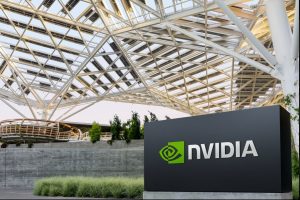CAMBRIDGE – Cambridge-based semiconductor and software design powerhouse ARM (NASDAQ: ARM) has introduced two advanced technologies aimed at transforming edge AI applications— the Ethos-U85 NPU and the Corstone-320 IoT Reference Design Platform. According to Paul Williamson, SVP and GM of the IoT LoB at ARM, these innovations promise to substantially boost the performance and efficiency of AI systems at the edge.
The Ethos-U85 NPU marks a significant advancement over its predecessors, offering a fourfold increase in performance and a 20% boost in power efficiency. Specifically designed to meet the demanding needs of applications such as factory automation and smart home cameras, the Ethos-U85 supports up to 2048 MAC units, delivering 4 TOPs at 1GHz. This third-generation NPU not only enhances machine learning tasks but also ensures compatibility with leading AI frameworks like TensorFlow Lite and PyTorch, fostering ease of integration for developers.
In addition to conventional convolutional neural networks, the Ethos-U85 is equipped to handle transformer networks, which are crucial for advanced vision and generative AI tasks such as video understanding and multi-camera data analysis.
Early adopters of the new NPU include industry leaders like Alif Semiconductor and Infineon. Reza Kazerounian, co-founder and president of Alif Semiconductor, praised the Ethos-U85 for its ability to meet the high-performance demands of next-generation edge AI applications in a power-efficient manner. Steve Tateosian, SVP at Infineon, highlighted the importance of secure and high-performance compute systems for sophisticated edge AI use cases, expressing enthusiasm for continuing Infineon’s partnership with ARM.
Simultaneously, ARM has launched the Corstone-320 IoT Reference Design Platform, which integrates the new Ethos-U85 NPU with ARM’s highest performance Cortex-M85 CPU and the Mali-C55 Image Signal Processor. This platform is designed to enhance a wide array of edge AI applications, from voice and audio processing to advanced vision systems capable of real-time image classification and object recognition.
The Corstone-320 platform is particularly notable for its inclusion of virtual hardware, allowing software development to commence even before physical chips are available. This feature is set to drastically reduce time to market for complex edge AI devices, aligning with ARM’s strategy to support the rapidly growing demand for AI technologies from startups to leading microcontroller manufacturers.
With a global ecosystem comprising over 15 million developers, ARM is well-positioned to scale edge AI deployment across diverse industries, further cementing its role as a pivotal player in the AI and IoT sectors.
More entries on automation.



















